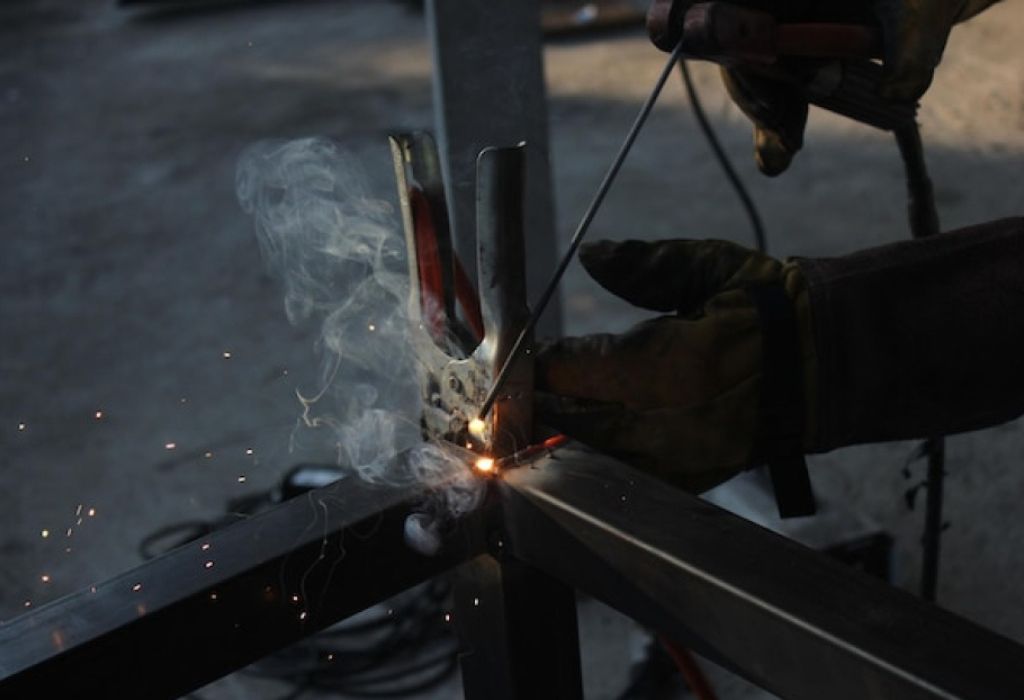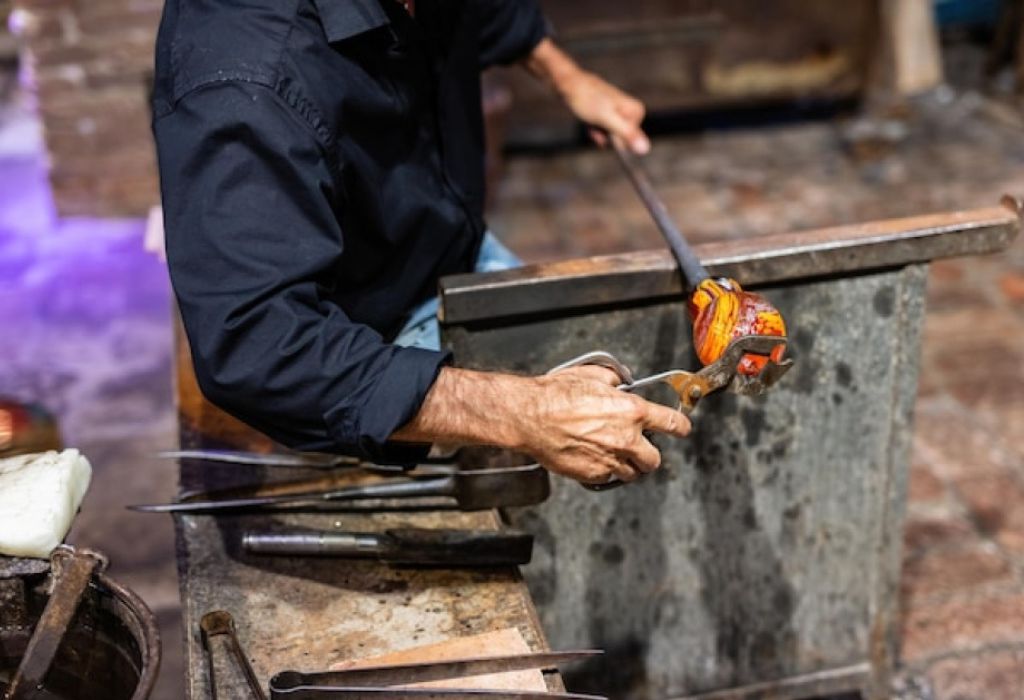In an old courtyard, a restorer examines the rusted hinge of a historic gate that has stood for more than a century.
The delicate scrollwork is cracked, and the once-black finish now shows silvery streaks of metal beneath.
The question that sparks every craftsperson’s curiosity arises — can you weld wrought iron without destroying its character?
Unlike mild steel, wrought iron is fibrous, filled with slag strands that give it its famous toughness and unique texture.
This composition also makes it unpredictable when heated, often causing porosity, cracking, or delamination if welded carelessly.
Many assume it behaves like modern low-carbon steel, but one wrong setting can permanently scar the metal’s grain structure.
According to the American Welding Society (AWS), wrought iron contains up to 3% slag that influences heat transfer and weld pool behavior.
That’s why traditional blacksmiths often choose forge welding or brazing instead of high-heat fusion methods.
However, with the right preheat, filler rod, and slow cooling, even century-old gates and railings can be safely restored using modern processes.
Understanding the difference between genuine wrought iron and today’s “wrought-look” mild steel is the first step.
The next is choosing a process — from SMAW and TIG to silicon-bronze brazing — that respects the material’s grain and preserves its strength.
Before striking an arc, it’s essential to know how wrought iron reacts to heat, why preheating matters, and what techniques professionals use to achieve durable, invisible welds. This guide explains everything you need to weld or restore wrought iron safely — without compromising its history or appearance.
What Exactly Is Wrought Iron?

Composition and Structure
Wrought iron is one of the oldest ferrous metals used in construction, known for its toughness and malleability. It contains very low carbon (usually below 0.08%) and a high amount of slag fibers that appear as dark lines when etched.
Is modern “wrought iron” real?
No. Most modern “wrought iron” sold today is actually mild steel shaped to mimic the classic look.
What gives wrought iron its texture?
Slag fibers are trapped during puddling, forming a fibrous grain like wood.
Why does slag matter in welding?
It interrupts heat flow and can cause impurities or porosity in the weld pool.
Is it stronger than mild steel?
Not necessarily — it’s softer but more ductile, meaning it bends before breaking.
Does wrought iron rust differently?
Yes. It corrodes slower and forms protective layers rather than deep pitting.
Difference from Mild Steel
Mild steel is uniform in composition and easy to weld, but wrought iron behaves differently under heat. Its fibrous nature demands careful temperature control and cleaning.
Can you weld wrought iron like mild steel?
Not safely without preheat and correct filler metal.
Why do old gates crack after arc welding?
Because modern weld heat exceeds what wrought iron grain can tolerate.
What filler metal works best?
Nickel or low-hydrogen steel rods to maintain ductility.
Is forge welding still used?
Yes, especially for heritage restoration projects.
Does the metal harden after welding?
No, but slag lines can create stress points if overheated.
Can You Weld Wrought Iron?
The short answer is yes — but only with proper technique, filler, and preparation. Wrought iron is weldable, but its unique grain and impurities require low-hydrogen methods and careful control of temperature.
Welding Possibilities and Limitations
Wrought iron can be forge welded, arc welded (SMAW, MIG, TIG), or brazed. Each method depends on the project type and metal condition.
Is forge welding most authentic?
Yes. It recreates the original joinery and texture of historical pieces.
Can arc welding replace forge welding?
Yes, for non-visible joints if done with care.
Main risk of arc welding?
Cracks following slag inclusions.
When to avoid welding?
On thin, corroded pieces where heat can destroy details.
Is brazing an option?
Yes, for decorative and non-structural repairs.
When Welding Is Not Recommended
Heavily corroded wrought iron should not be fusion welded. The internal slag network weakens under intense heat, causing fractures.
What if the piece is delaminated?
Use mechanical fasteners or low-temp brazing.
Is cutting out sections better?
Sometimes, replacement of small inserts is safer.
Can heat fix deep rust flakes?
No, it worsens delamination.
Is pre-cleaning required?
Always. Remove paint, rust, and oil before heating.
Can new and old metal be joined?
Yes, but preheat and filler choice are crucial.
How to Identify Wrought Iron Before Welding
Simple Identification Methods
Knowing whether metal is wrought iron or mild steel prevents mistakes. Real wrought iron has visible fibers and a dull red spark stream.
How to perform a spark test?
Grind lightly — wrought iron gives long, dull sparks with few bursts.
Can you see the grain?
Yes, when filed or broken, fibers appear like wood grain.
Is magnet testing useful?
Both metals are magnetic, so no.
Does color change under heat?
Wrought iron heats more slowly due to slag inclusions.
Can acid reveal its grain?
Yes, mild acid etching exposes black slag lines.
Visual Clues in Old Metalwork
Historic wrought iron often shows hammer marks and layered textures. Newer mild steel is smoother and uniform.
Do old riveted joints indicate wrought iron?
Likely, as rivets were common before arc welding existed.
Can a bend test confirm it?
Yes, wrought iron bends and shows strands instead of snapping.
Do restorers label grain direction?
Yes, welding along the grain minimizes cracking.
Can you weld across grain lines?
It’s possible but increases risk of stress failure.
Why document the grain?
So future welds can follow the same orientation.
Best Welding Methods for Wrought Iron
Forge Welding
Forge welding joins wrought iron at high heat using hammer pressure and flux. It’s ideal for heritage restorations.
What flux is used?
Borax-based flux prevents oxidation.
How hot is the metal?
Near yellow heat (~2500°F / 1370°C).
Can slag cause defects?
Yes, if not cleaned between passes.
Main advantage?
Authentic, strong, and visually consistent joints.
Main drawback?
Requires skill and forge setup.
SMAW (Stick Welding)
Stick welding works well for thicker wrought iron with proper electrodes.
Which rod type?
E7018 or nickel rods.
Why low-hydrogen?
It prevents hydrogen cracks along slag fibers.
Heat control tip?
Use shorter beads and let cool between passes.
Should you peen the bead?
Yes, light peening relieves stress.
Is slag removal vital?
Absolutely, clean after each pass.
TIG (GTAW) Welding
TIG offers precision and minimal contamination — ideal for decorative scrolls.
What filler metal?
ER70S-2 or nickel-based filler.
Shielding gas?
Pure argon.
Preheat necessary?
Yes, moderate preheat avoids cracking.
When to use TIG?
On visible or delicate details.
Can you pulse TIG wrought iron?
Yes, helps prevent overheating.
MIG (GMAW) Welding
MIG welding is faster and suitable for production repairs if slag contamination is managed.
What wire type?
ER70S-6 with deoxidizers.
Best polarity?
DCEP (reverse polarity).
Is spray transfer ideal?
No, short-circuit mode gives better control.
Do multiple passes help?
Yes, but clean between each pass.
Preheat still required?
Always, even for MIG.
Brazing
Brazing is preferred for low-stress decorative repairs.
What filler is used?
Silicon bronze or silver alloy.
At what temperature?
Below melting point of the base metal (~1600°F).
Joint strength?
Adequate for non-load areas.
Does color match?
Yes, when patinated correctly.
Why choose brazing?
Preserves grain and avoids melting.
Selecting Filler Metals and Consumables
Filler selection determines whether your weld cracks or holds. Nickel-based and low-hydrogen fillers offer the best ductility and compatibility with wrought iron.
Why nickel rods?
They accommodate slag inclusions and expand evenly.
Can mild steel fillers be used?
Only with extreme preheat and cleanliness.
What about bronze filler?
Excellent for visual blending and flexibility.
Avoid stainless?
Yes, it’s too rigid and causes cracking.
Flux-core wire okay?
Not ideal — too hot and less controlled.
Preheating, Cooling, and Distortion Control
Wrought iron’s slag fibers expand unevenly under heat, so preheat ensures uniform expansion.
Ideal preheat range?
200°C–260°C (390°F–500°F) depending on thickness.
How to check temperature?
Use temperature crayons or infrared thermometers.
Interpass temperature?
Keep within 300°C max to prevent hard spots.
Cooling method?
Slow cool under blankets or sand.
Why avoid quenching?
It shocks the grain and causes cracks.
Joint Design and Fit-Up
Correct joint geometry reduces stress concentration.
What joint suits wrought iron?
Lap and scarf joints for strength and grain continuity.
Root gap size?
Tight fit-up to prevent burn-through.
Use backing bars?
Yes, copper or mild steel helps stabilize heat.
Clamping method?
Gentle, with padding to prevent denting scrolls.
Sequence?
Skip weld to balance heat input.
Common Welding Problems and Fixes
Porosity and Cracking
These are the most frequent issues when welding wrought iron.
Cause?
Trapped slag, poor cleaning, or rapid cooling.
Solution?
Clean thoroughly, preheat evenly, and peen after welding.
Why cracks follow grain?
Slag lines act as weak paths under tension.
How to fix small cracks?
Stop-drill ends and re-weld with nickel filler.
Porosity visible after grinding?
Grind deeper and refill at lower amperage.
Lack of Fusion
Cause?
Low heat input or contaminated surface.
Solution?
Increase amperage slightly, improve contact, and clean slag before passes.
Detect visually?
Yes, dull bead with cold lap edges.
Can preheat fix it?
Helps by stabilizing temperature gradients.
Preventative step?
Use short stringer beads and correct travel angle.
Safety Considerations When Welding Wrought Iron

Safety becomes crucial during restoration work since old coatings may contain lead or zinc.
Is lead paint dangerous?
Yes, produces toxic fumes when heated (OSHA guide).
Should galvanizing be removed?
Always grind away zinc before welding.
Need ventilation?
Yes, use fume extractors or welding respirators.
Protect surroundings?
Historic sites often require flame shields.
Fire risk?
High — keep extinguishers nearby during heating.
Finishing and Corrosion Protection
Once welded, wrought iron must be sealed immediately to prevent rust.
Best primer?
Zinc-rich epoxy.
Topcoat type?
Polyurethane or oil-based paint.
Is hot-dip galvanizing safe?
Possible, but not for ornate details due to heat distortion.
Alternative?
Cold galvanizing or wax coating for antique finishes.
Maintenance frequency?
Inspect and repaint every 3–5 years for outdoor pieces.
Restoration Tips for Historic Wrought Iron
Historic conservation requires minimal intervention. Always preserve original metal whenever possible.
When to repair vs replace?
Repair when structure is intact; replace only if metal is beyond recovery.
Is arc welding allowed in conservation work?
Yes, if hidden and reversible.
How to document repairs?
Photograph, label, and record all welded areas.
Can modern filler ruin authenticity?
Visually, no, but keep composition notes.
Need approvals?
Often required by heritage authorities.
Cost, Tools, and Time Overview
Welding wrought iron takes more preparation time than welding steel.
Main cost driver?
Preheat setup, consumables, and finishing.
Tools required?
Nickel rods, bronze filler, copper backing, flux, temp crayons, clamps, and fume extractor.
Average welding time?
1.5–2x longer than mild steel.
Repair vs replacement cost?
Repairing is usually cheaper and maintains originality.
Best workflow?
Clean → Identify → Preheat → Weld → Cool → Finish.
Conclusion
So, can you weld wrought iron? Yes — but it demands patience, skill, and the right materials. Its fibrous structure behaves unlike modern steel, and success depends on controlling heat, using compatible fillers, and respecting the metal’s grain.
Whether you choose forge welding, TIG, or brazing, each technique has its place. With careful preheat, low-hydrogen rods, and slow cooling, your welds can last decades while preserving the character that makes wrought iron timeless.
Before striking your next arc, test your process on scrap, document your steps, and treat every joint like a piece of history — because when done right, welding wrought iron is not just repair, it’s restoration.

I’m Darrell Julian, the founder, lead writer, and hands-on welding enthusiast behind ArcWeldingPro.com. With more than 15 years of real-world welding experience, I created this platform to share what I’ve learned in the field, in the shop, and in the heat of the arc.


